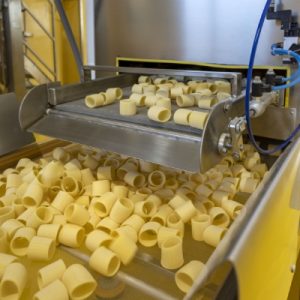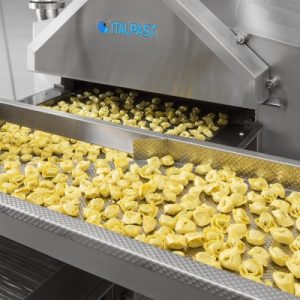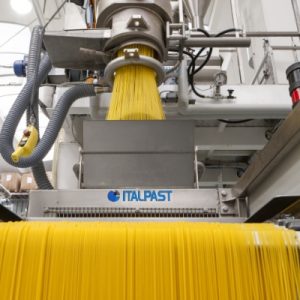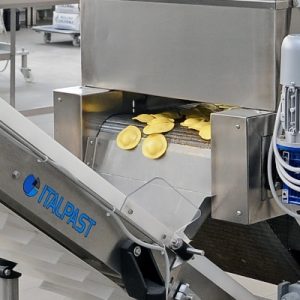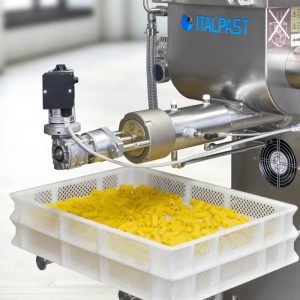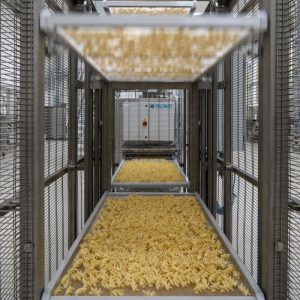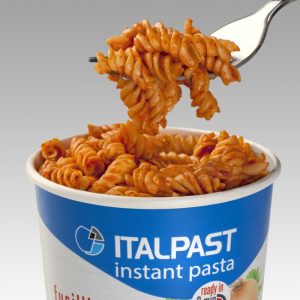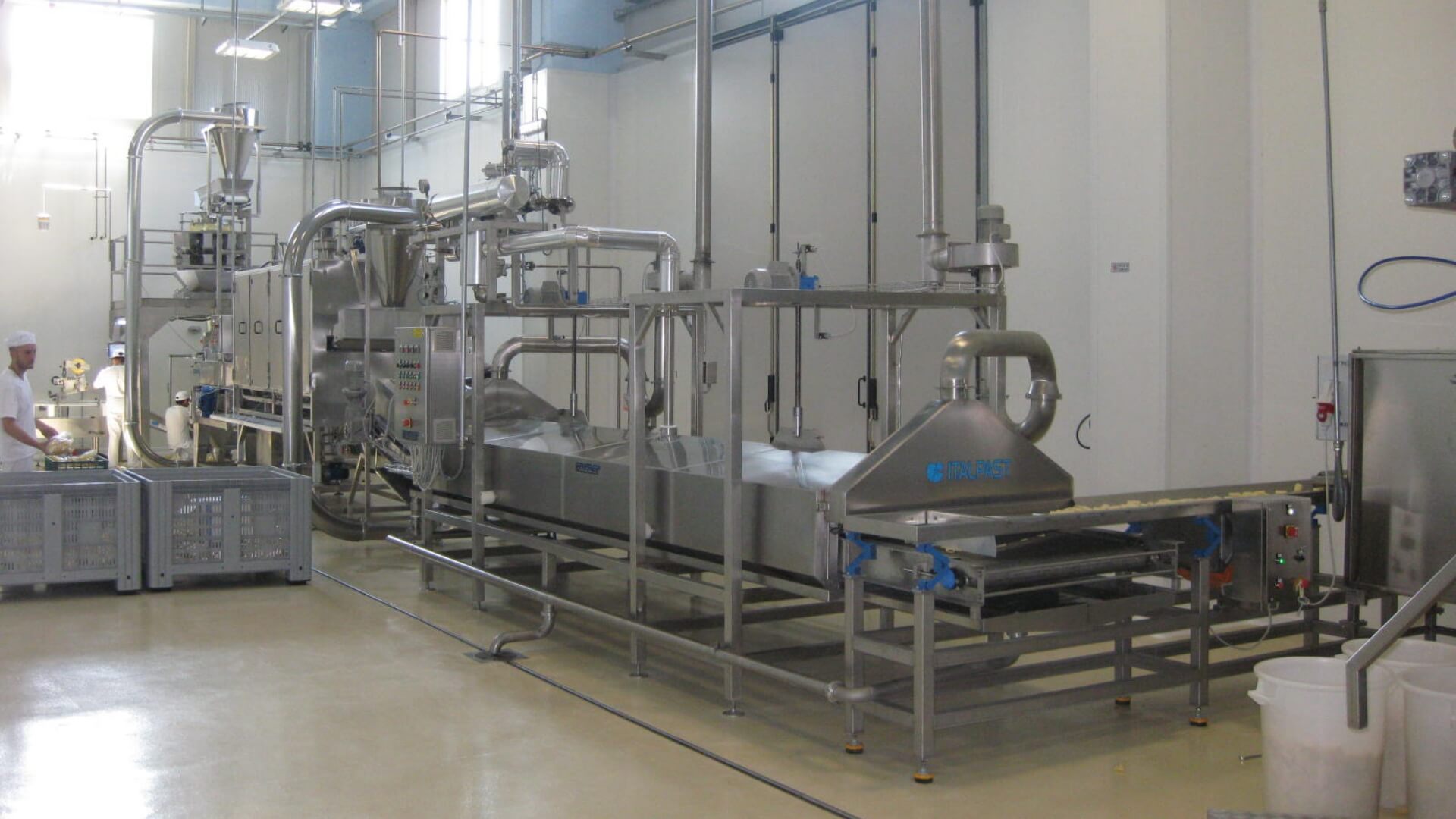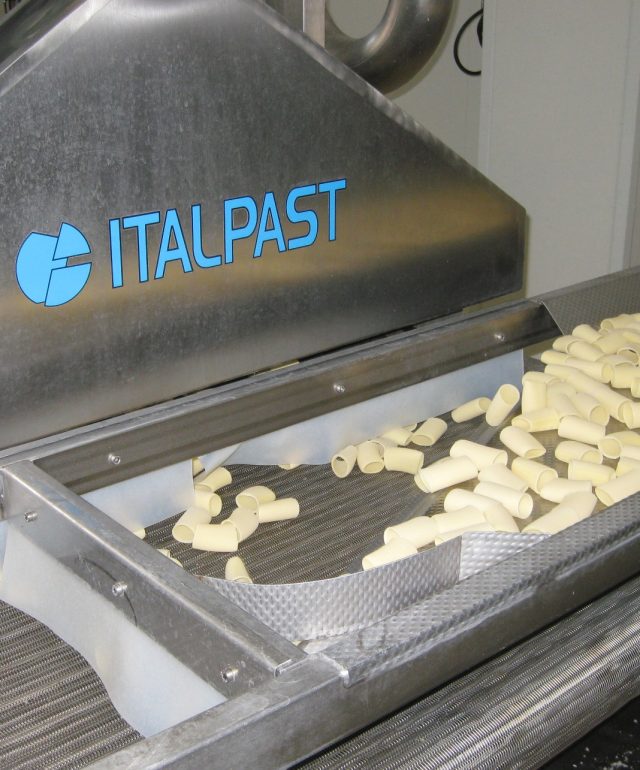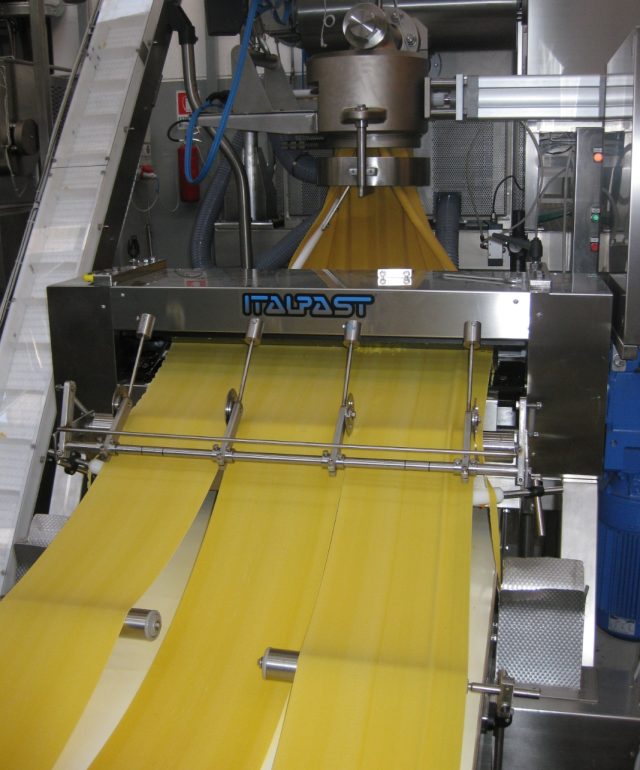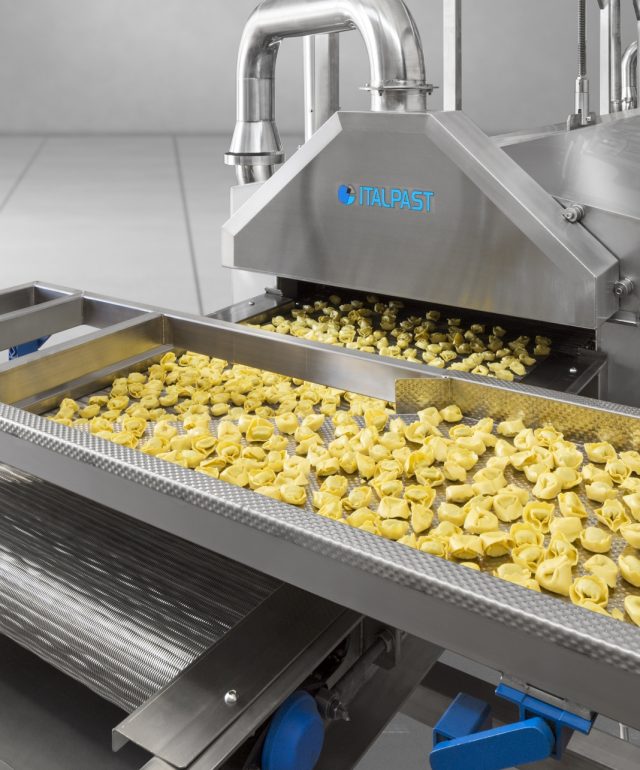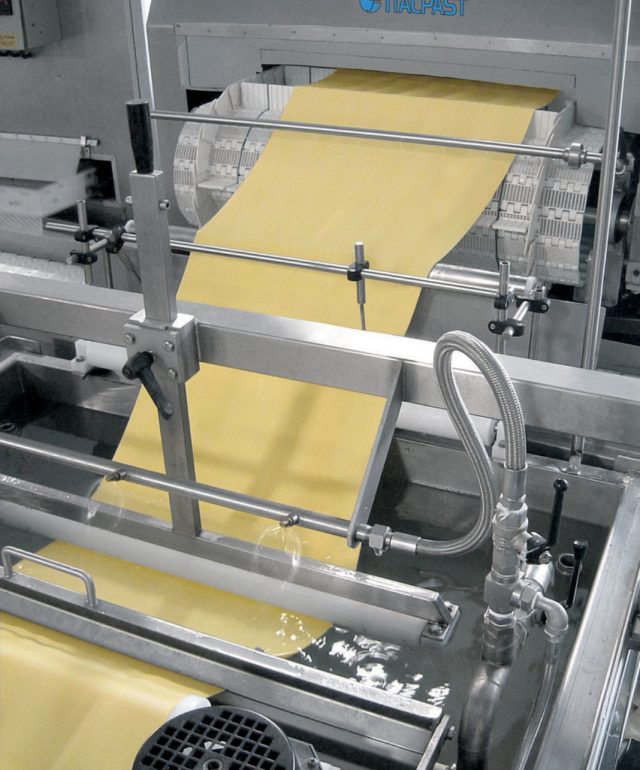Machine for fresh short-cut pasta
The Extruders, can be of the “batch” type, i.e. equipped with the classical mixing basin or continuous and automatic, suitable for productions over 200 Kgs per hour. In this last case they are equipped with automatic dosers for flour and liquids and Centrifuge pre-mixer.
After the hydration phase the dough is extruded through the pasta die which determines its shape. At exit of the die the pasta is cut at the desired length and transferred to the heat treatment.
Descrizione dei macchinari componenti la linea
La produzione di pasta fresca corta può essere suddivisa in diverse fasi, tra cui:
- la preparazione degli ingredienti, impastamento, in cui gli ingredienti vengono miscelati insieme per creare l’impasto. Per questa fase, si può utilizzare una macchina impastatrice a spirale o a bracci tuffanti.
- Laminazione, dove l’impasto viene laminato per ottenere il giusto spessore della pasta. Per questa fase, si può utilizzare una macchina laminatrice.
- La fase di taglio, dove la pasta viene tagliata nella forma desiderata, sia corta che lunga e ripiena. Per questa fase, si possono utilizzare diverse macchine, come tagliatrici a rulli, tagliatrici a disco, tagliatrici a nastro, per fare diverse forme di pasta.
- L’asciugatura in cui la pasta fresca viene fatta asciugare, e non essiccare, per ridurre l’umidità e prolungare la sua shelf life. Per questa fase, si possono utilizzare essiccatori aria calda o essiccatori a tunnel. Ed infine il confezionamento, in cui la pasta asciugata viene confezionata e sigillata per la conservazione e la distribuzione. Per questa fase si può fare un doppio processo di pastorizzazione attraverso il trattamento termico dell’involucro così da ridurre ancora di più l’esposizione batteriologica.
Our Extruders featuring output from 100 Kg per hour enable production of sheet pasta to be coupled with any Forming machines for production of filled pasta of any sizes. The sheet-pasta tensioning device enables automatic coupling of each Sheeter or Extruder to the corresponding Forming machine. Depending on the type of filling used the machines are equipped either with screw- or lobe-dosing Pump: this machine operates independently, so it can be easily removed to enable washing operations at the end of production. The sheet-pasta scraps obtained from filled pasta moulding are collected and then pneumatically transferred to the mixer, to be put back into the dough mixture.
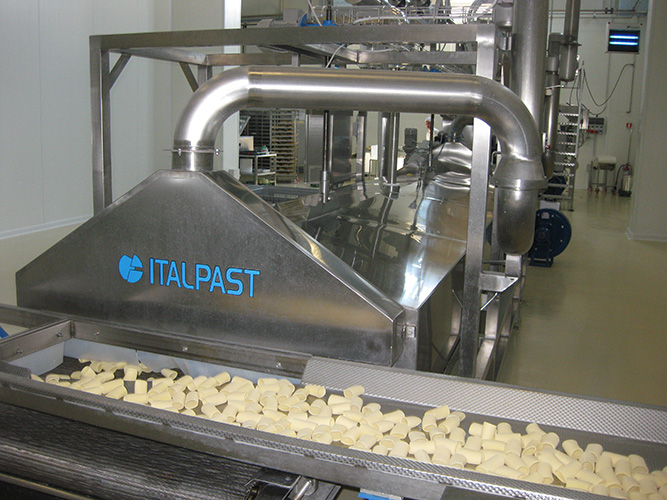
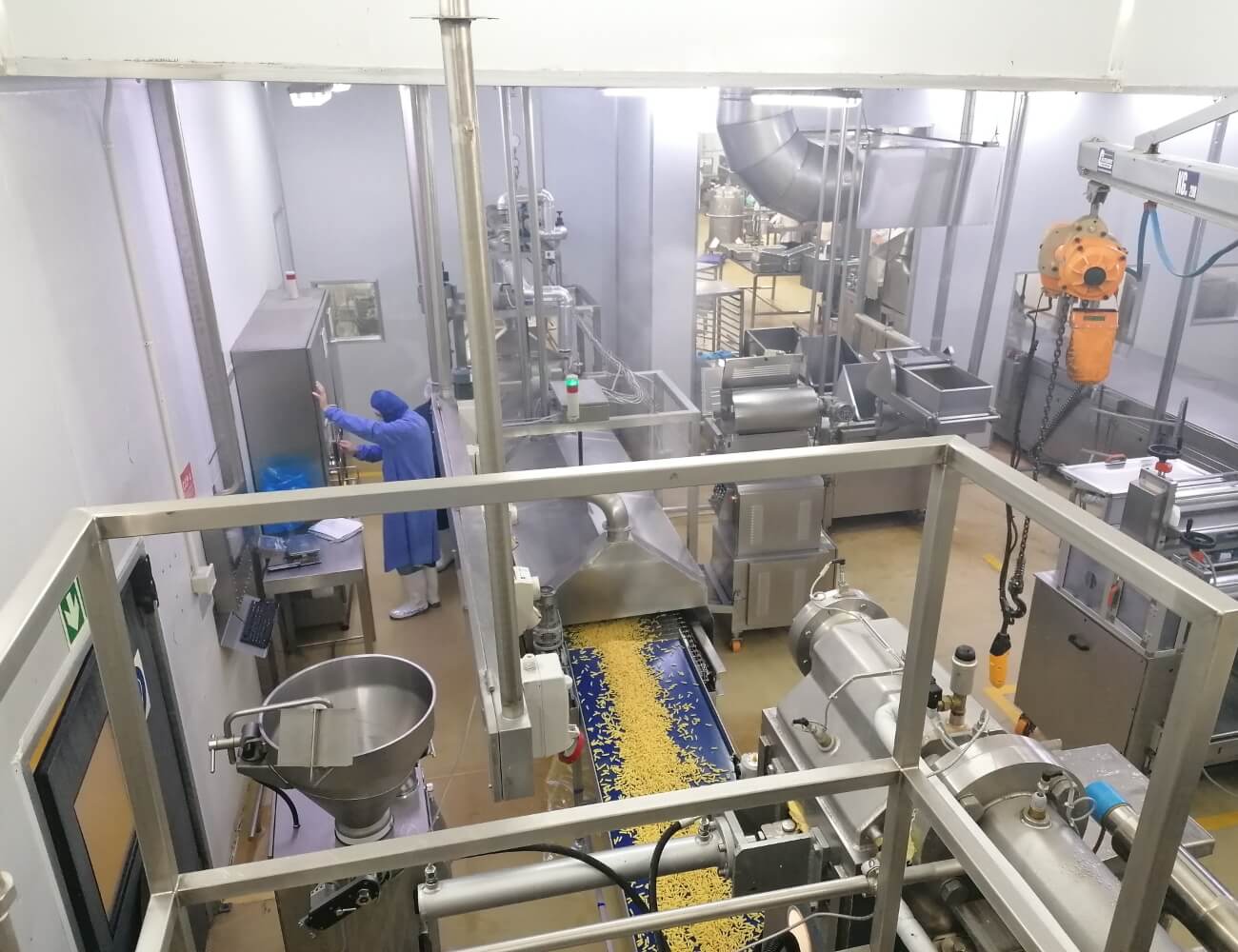
The moulded product, which is collected from one or more Forming machines is transferred to the following pasteurization phase by means of a series of conveyor belts. As far as production of unfilled pasta is concerned, besides all those products obtained with sheet pasta, also the most varied short pasta as well as long pasta shapes (e.g. spaghetti, linguine, bigoli, etc.) can be produced. Sheeters, Extruders, Ravioli machines, Forming machines for cappelletti and tortellini, Lasagne machines and Nesting machines must always be integrated in the line production process with a view to ensuring the highest efficiency, flexibility and reliability.
Thermal treatment technologies
treatment
After production the next step is the choice of shelf-life and preservation of the product. A very widespread method ensuring longer shelf-life is deep-freezing: besides ensuring optimal stability the product freshness remains unaltered for a long time.
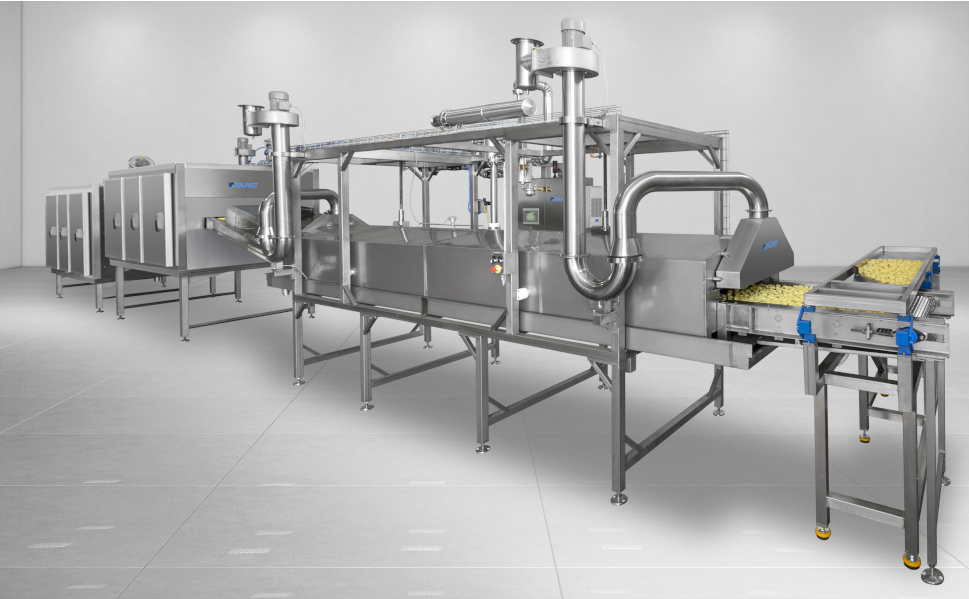
Description of machines and procedures for the thermal treatment of fresh pasta
However, when speaking of fresh pasta we usually mean a limited, medium-preservation product, pasteurized and packaged in protected atmosphere (MAP / ATM). The hydro-thermal treatment technology for fresh pasta, which is required for eliminating or reducing to the minimum the proliferation of bacteria, that Italpast have developed in more than 30 years’
activity and experience is certainly a guarantee. Pasteurizers running by saturated or overheated steam supply steam in a uniform and direct way all over the product so as to reach the ideal treatment temperature, which changes depending on the time and temperature values set by the operator. Pasteurization by overheated steam enables to obtain relatively low
humidity conditions, less damaging to the final quality of the product. Pasta undergoes also a drying phase to reach cooling and stabilization before packaging. We have manufactured new, multiple-tier machinery featuring more belts for pasteurization and
pre-drying of the product on more levels. The complete series of steam flux adjusting devices, which is controlled independently over and below the pasteurization belt, the micro-perforated distribution plates, the excellent insulation in rock wool, the care of construction details such as the exhaust caps and the washing basins: all this makes these models functional and reliable.
Cooling of pasta before packaging is another important phase in the fresh pasta treatment cycle, the more so shouldn’t the product undergo any further stabilization treatments after packaging, such as the after-packaging pasteurization.
Our company aims at lowering temperature in the shortest time possible, below a certain threshold of temperatures that are considered at high contamination risk (bacterial proliferation). Our Coolers are customized, therefore width of belt, evaporators and refrigerants vary in relation to the spaces and to the available technical and technological specifications; there are different
types depending on the time and on the minimum temperature to be reached to the product core, especially for filled pasta.
Our machines for fresh pasta
Pasta production LinesOther plants for fresh pasta
Contact usAsk for an advice to our technical Experts to implement the most suitable line for your needs
HEADQUARTER
43036 Fidenza (PR) – Italia
REGISTERED OFFICE
43121 Parma – Italia
